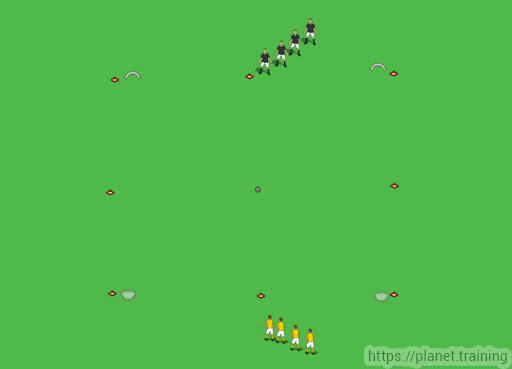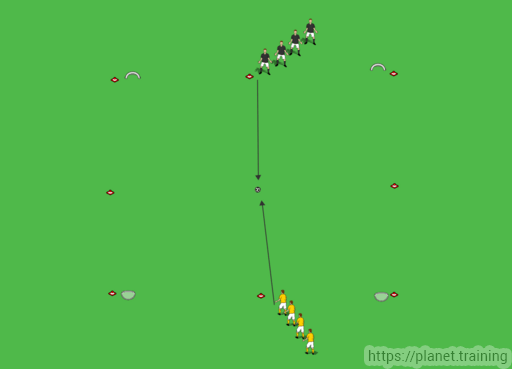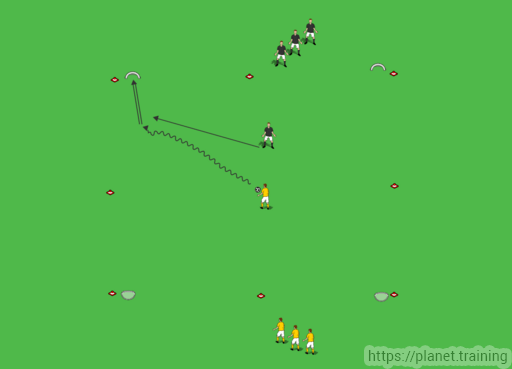By Anthony Hazelwood
The following activity triggers players to perform a speed reaction activity. It includes velocity reaction and linear sprinting actions to the ball. The metabolic training adaptations are meant for speed production. The time of action for each repetition should be around 5 to 12 seconds’ max and the resting period for each athlete after each action should be around 50 seconds. The reason for the resting period being greater in an amount in comparison to the intensive action is to promote complete recovery before commencing the following action. Therefore, not fatiguing the athlete and having them perform their action at maximal pristine level.
When preparing the activity, if needed, concentration and difficulty levels may be increased by having players execute something extra unique by setting more restrictions. Every activity may be modified, and it is up to the coach to be creative. However, it is important to respect the parameters of the exercise time, the rest, the types of actions used and the weekly periodization of the activity.
Additionally, it is beneficial to train a soccer team and its players with all the elements of the game being present in the session. By doing so, it will promote soccer specific adaptations to the player’s body, mind, and emotional triad. Ultimately, these adjustments will enhance their real-time game performances on a physical, emotional, conscious, and subconscious mental level.
Area Size: 30 yd. L x 30 yd. W.
Total Activity Time: 14 Minutes.
Sets: 1.
Action Time: 5 – 12 seconds.
Recovery Interval Time between Action Time: 50 seconds (also depends on the number of players.)
Action Repetition: 8 – 11 reps per player.
Intensity: High.
Objectives:
• Tactical: Intensive speed actions to reach the ball first and then score.
• Fitness: Speed Production and Reaction.
• Technique: Proper fitness and off/on the ball execution/techniques.
• Mental-Emotional: Players fully engaged and concentration is high.
• Concentration Level: High.
Setup:

• Two lines of players are set up on the field as shown in the diagram above.
• Initially, the first two players are waiting to hear the coach’s command.
• As the players set, the coach will yell or blow the whistle.
• Once the players here the signal, they will run and try to win the ball.

• Whoever wins the ball first goes to score in either goal. Whoever is defending may try to win the ball and score at their end.

Coaching Points:
• Attentiveness during the start for speed reaction.
• Aggressiveness to win the ball.
• When in attack, use sound tactical elements to beat defenders. Move defender to one side and then quickly explode to the other.
• Good defensive technique and intelligence.
By Anthony Hazelwood
Current Seattle Sounders Academy Performance Coach with previous European academy coaching experience as an assistant fitness and strength/conditioning soccer coach with Levante U.D. (2013-2014) and Getafe SAD CF (2015-2016) in Valencia and Madrid, Spain respectively. A USSF “A” licensed coach with a BSc in Physical Education and an MSc in Sports Training and Nutrition.


